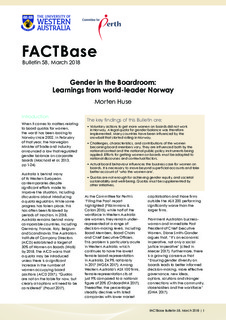Gender in the Boardroom: Learnings from world-leader Norway
Research report
Published version
Permanent lenke
http://hdl.handle.net/11250/2579967Utgivelsesdato
2018Metadata
Vis full innførselSamlinger
- Other faculty works [13]
- Publikasjoner fra CRIStin - BI [1015]
Sammendrag
The key findings of this Bulletin are:
• Voluntary actions to get more women on boards did not work in Norway. A legal quota for gender balance was therefore implemented. Many countries have been influenced by the snowball that started rolling in Norway.
• Challenges, characteristics, and contributions of the women becoming board members vary. They are influenced both by the national context and the national public policy instruments being applied. Efforts for getting women on boards must be adapted to national discourses and contextual factors.
• Actual board behaviour influences the business case for women on boards. It is necessary to move beyond superficial accounts and take better account of ‘who the women are’.
• Quotas are not enough for achieving gender equity, and societal sustainability and well-being. Quotas must be supplemented by other initiatives.
Utgiver
The University of Western AustraliaSerie
FACTBase Bulletin;;58
